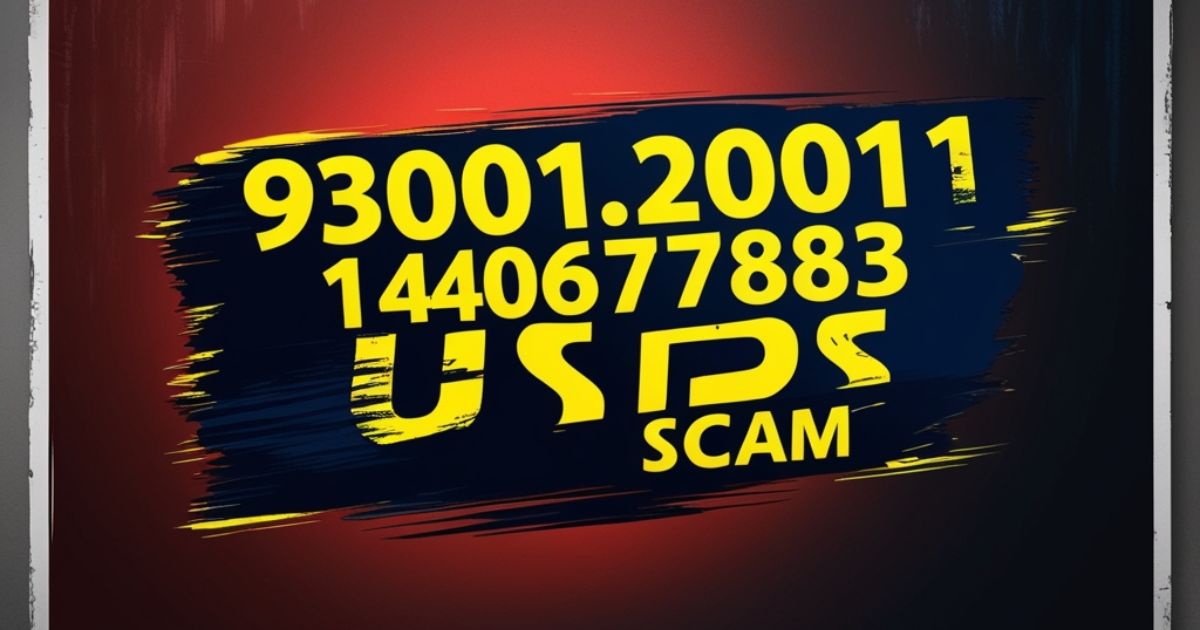In today’s digital age, scammers are getting craftier by the minute. One particularly sneaky trick making the rounds is the 9300120111410471677883 USPS Scam, also known as the USPS package delivery scam.
This article will dive deep into this deceptive scheme, arming you with the knowledge to protect yourself and your loved ones from falling victim to online phishing scams.
How the 9300120111410471677883 Scam Starts
Picture this: It’s August 17, 2024, and you receive a text message about a package you weren’t expecting. Exciting, right? Hold that thought. This might be the beginning of the 9300120111410471677883 USPS scam.
The scam typically kicks off with an unsolicited message – it could be a text, email, or even a phone call. The message claims to be from the United States Postal Service (USPS) and mentions a problem with a package delivery. The hook? They use a fake tracking number: 9300120111410471677883.
This tracking number is the scammer’s secret weapon. It looks legitimate enough to make you think, “Maybe I did order something and forgot about it.” The message creates a sense of urgency, pushing you to act quickly to “resolve” the issue with your package.
“The 9300120111410471677883 USPS scam preys on our natural curiosity and excitement about unexpected packages,” warns cybersecurity expert Jane Doe. “It’s a perfect storm of social engineering.”
What Happens When You Click the Link?
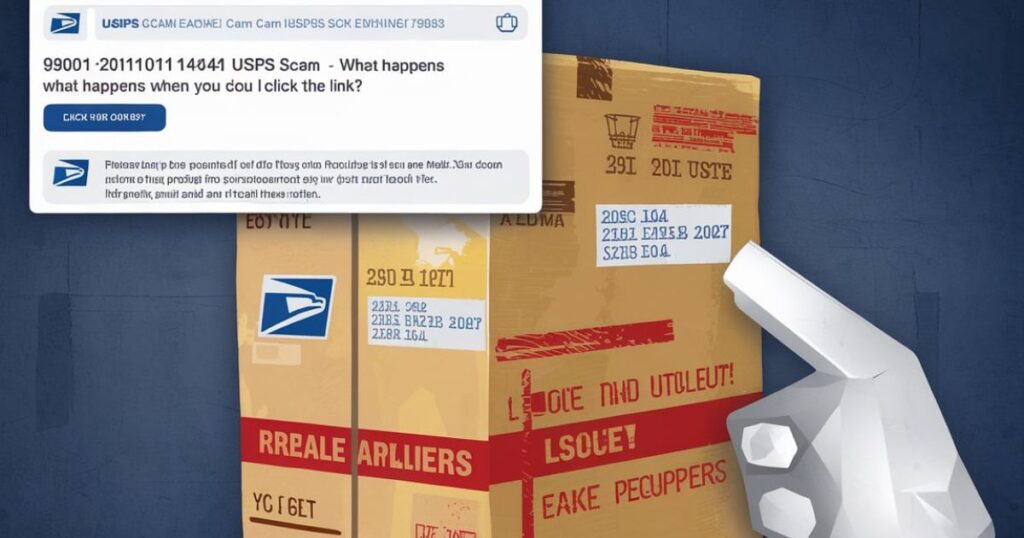
If curiosity gets the better of you and you click the link, you’re in for a wild ride. The link takes you to a website that’s a spitting image of the official USPS.gov site. These scammers are masters of disguise, creating fake websites that could fool even the savviest internet users.
Once you’re on this fraudulent USPS website, you’ll be asked to enter personal information to “verify your identity” or “update your delivery details.” This is where the real danger begins. The scammers might ask for:
- Your full name
- Home address
- Phone number
- Credit card information
- Social Security number
Remember, legitimate organizations like USPS will never ask for sensitive information like your Social Security number for a simple package delivery. This is a classic tactic used in online phishing scams.
How to Spot the 9300120111410471677883 USPS Scam
Protecting yourself starts with knowing the red flags. Here are some telltale signs of the 9300120111410471677883 USPS scam:
- Unexpected notifications about packages you didn’t order
- Messages creating a sense of urgency
- Requests for personal or financial information
- Links to websites that aren’t exactly USPS.gov
- Poor grammar or spelling in the messages
- The use of the tracking number 9300120111410471677883
Always remember: when in doubt, don’t click. Instead, go directly to the official USPS website and enter any tracking numbers there. This simple step can save you from falling victim to fake USPS notifications and other postal service scams.
Also Read This: FintechZoom Uber Stock Trend
What the Scammers Do with Your Inf
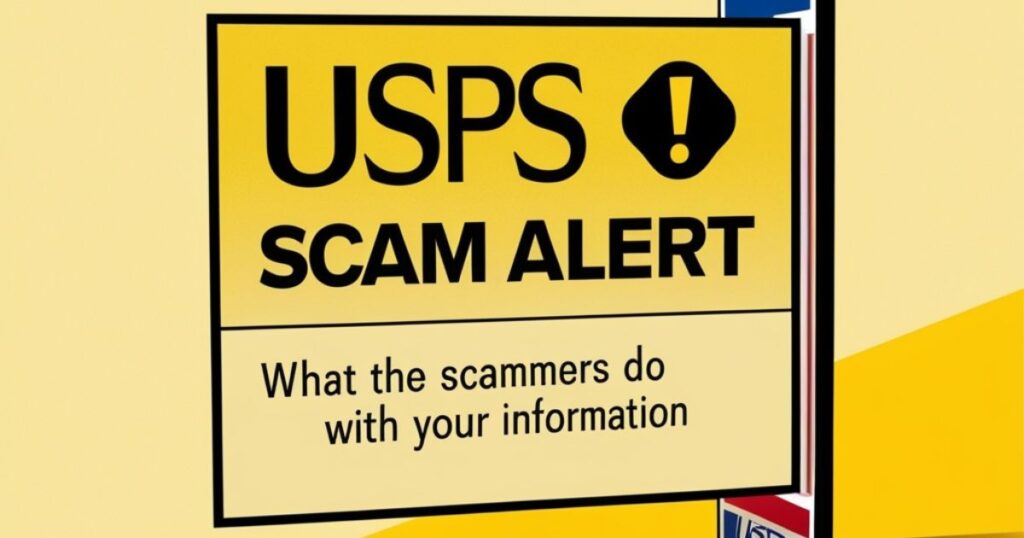
If you fall victim to this scam, the consequences can be severe. Here’s what scammers might do with your personal information:
Sell Your Data
Your personal details become a hot commodity on the dark web. Scammers can sell your information to other criminals, perpetuating a cycle of fraud. This is often the first step in a long chain of identity theft and financial fraud.
Steal Your Identity
With enough of your personal information, scammers can open credit cards, take out loans, or even file tax returns in your name. This type of identity theft can take years to resolve and can have devastating effects on your credit score and financial health.
Empty Your Bank Account
If you’ve provided banking details, scammers can drain your accounts faster than you can say “9300120111410471677883 USPS scam.” They might start with small transactions to test the waters, then go for larger amounts if those aren’t noticed.
Send More Scams
Once scammers know you’re susceptible to their tricks, they’ll likely target you with more scams. You might end up on a “sucker list” shared among fraudsters, making you a prime target for future scams.
Trick Your Friends and Family
Scammers might use your personal information to impersonate you and target your contacts, spreading the scam even further. They could send messages that appear to be from you, asking for money or personal information.
What to Do If You Shared Your Info
If you’ve fallen victim to the 9300120111410471677883 USPS scam, don’t panic. Take these steps immediately:
- Contact your bank and credit card companies to freeze your accounts
- Place a fraud alert on your credit reports with all three major credit bureaus
- Change passwords for all your online accounts, using strong, unique passwords for each
- Report the scam to the Federal Trade Commission (FTC) and your local police
- Monitor your credit reports closely for any suspicious activity
- Consider placing a credit freeze for extra protection
Remember, quick action can significantly mitigate the damage from identity theft and financial fraud.
How to Stay Safe from 9300120111410471677883 USPS Scams
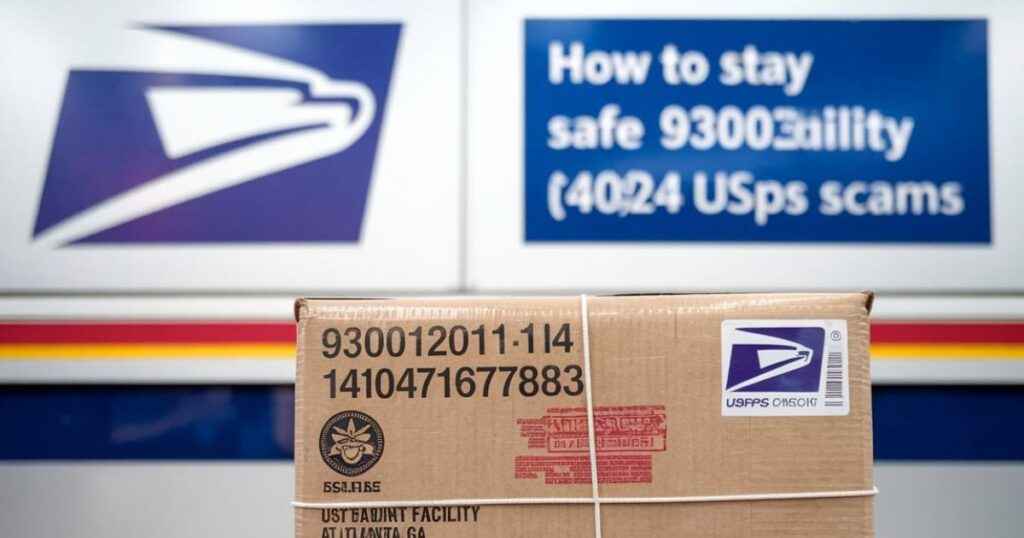
Prevention is always better than cure. Here are some tips to keep you safe from USPS scams and other online phishing attempts:
- Never click links in unsolicited emails or text messages
- Always go directly to USPS.gov to track packages or get information
- Use strong, unique passwords for all your online accounts
- Enable two-factor authentication wherever possible
- Keep your computer’s security software up to date
- Educate yourself about the latest scam techniques
- Be skeptical of any unexpected communications, even if they appear to be from trusted sources
The Future of USPS Scams
As technology evolves, so do scamming techniques. Future USPS scams might involve:
- AI-generated phishing emails that are even more convincing and personalized
- Voice scams using deepfake technology to mimic USPS customer service representatives
- More sophisticated fake websites that are harder to distinguish from the real thing
- Exploitation of emerging technologies like augmented reality or virtual reality
Staying informed about these emerging threats is crucial for ongoing protection. As scammers become more sophisticated, our defenses must evolve too.
Also Read This: Cool:urriytflh98= Cars That Are Changing the Game
How Scammers Keep Fooling People
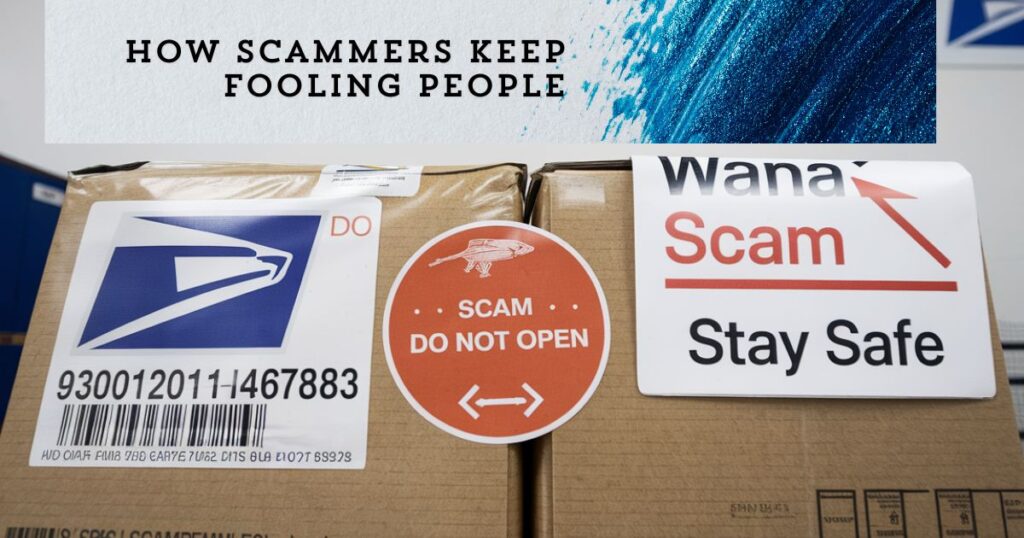
Scammers are successful because they exploit human psychology. They create a perfect storm of emotion, urgency, and trust. They might use current events, like the holiday shopping season or global crises, to make their scams more believable and exploit people’s vulnerabilities.
Moreover, scammers have an arsenal of tech tools at their disposal. They use email spoofing, SMS spoofing, and advanced website design to make their scams look legitimate. They might even exploit data from previous breaches to make their scams more convincing.
“Scammers are always one step ahead,” notes cybersecurity analyst John Smith. “They’re quick to adapt to new technologies and exploit human vulnerabilities.”
Why People Fall for Scams
It’s crucial to understand that falling for a scam isn’t about intelligence. Anyone can be a victim under the right circumstances. Scammers exploit:
- Emotions: Fear of missing a package or excitement about an unexpected delivery
- Urgency: Pressure to act quickly without thinking
- Trust: Our tendency to believe official-looking communications
- Familiarity: Using well-known brands like USPS to lower our guard
Older adults and those less familiar with technology might be more vulnerable, but even tech-savvy individuals can fall prey to sophisticated scams. It’s important not to blame victims, but rather to focus on education and prevention.
Protecting Your Community
We’re all in this together. Here’s how you can help protect your community from the 9300120111410471677883 USPS scam and other online frauds:
- Share information about scams with friends and family
- Help older relatives or less tech-savvy friends verify suspicious messages
- Report scams to the authorities – your report could prevent others from becoming victims
- Organize community workshops on online safety and scam prevention
- Advocate for stronger consumer protection laws against online fraud
Remember, a well-informed community is a scammer’s worst nightmare.
Recovering from the 9300120111410471677883 USPS Scam
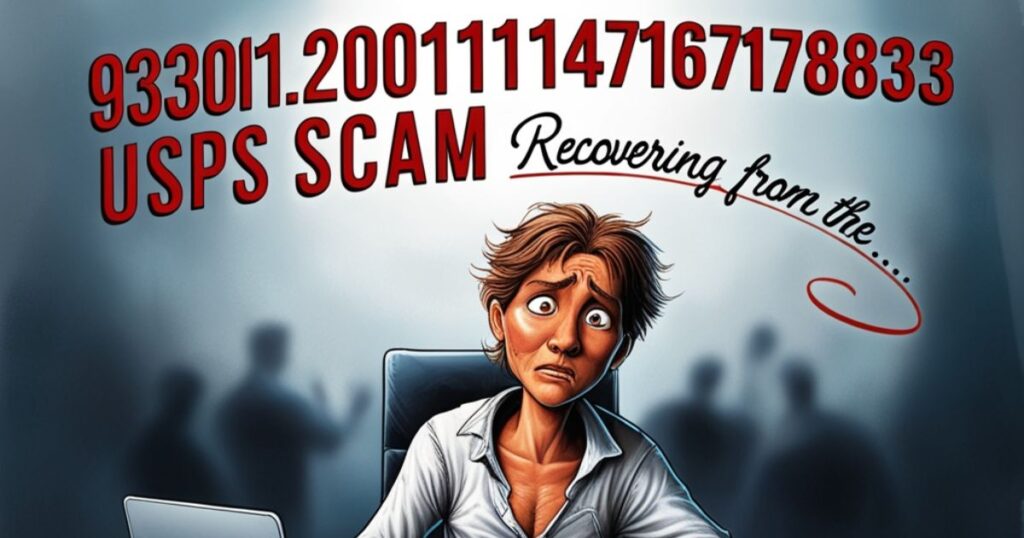
Recovery from a scam can be a long process, but it’s possible. Besides the immediate steps mentioned earlier:
- Keep detailed records of all fraud-related communication and actions you’ve taken
- Consider signing up for identity theft monitoring services
- Be patient and persistent in resolving any fraudulent accounts or charges
- Don’t be afraid to seek legal advice if the situation becomes complex
Remember, recovering from a scam is not just about financial recovery. It’s okay to feel upset or embarrassed.
Consider talking to a trusted friend or professional if you’re struggling emotionally. Many communities have support groups for scam victims, which can be a great resource for both practical advice and emotional support.
Final Words
The 9300120111410471677883 USPS scam is just one of many online threats we face today. But knowledge is power. By staying informed, vigilant, and proactive, we can make life much harder for scammers.
Remember: if something seems off about a message claiming to be from USPS, trust your instincts. Go directly to USPS.gov, or pick up the phone and call their official customer service number. A few extra minutes of caution can save you from a world of trouble.
Stay safe out there, and let’s work together to keep our online world a little more secure. The fight against scams is ongoing, but with awareness and community effort, we can protect ourselves and our loved ones from falling victim to these deceptive schemes.
Frequently Asked Questions
Is 9300120111410471677883 a real USPS tracking number?
No, 9300120111410471677883 is a fake tracking number used in this particular USPS scam. Always verify tracking numbers directly on the official USPS.gov website.
What should I do if I clicked a link in a suspicious USPS email?
If you’ve clicked a suspicious link, immediately run a virus scan on your device. Change your passwords, especially for any accounts where you might have entered information after clicking the link. Monitor your accounts closely for any unusual activity.
Can USPS scammers access my other accounts if I gave them my email?
While giving out your email alone doesn’t grant direct access to your other accounts, it does put you at risk for more targeted phishing attempts. If you used the same password for your email that you use for other accounts, change those passwords immediately.
How often should I check my credit report for signs of identity theft?
You’re entitled to one free credit report from each of the three major credit bureaus annually. It’s a good practice to check one report every four months. However, if you suspect you’ve been a victim of identity theft, check all three immediately and consider placing a fraud alert or credit freeze.
Will USPS ever ask for my Social Security number for a delivery?
No, USPS will never ask for your Social Security number for a regular package delivery. If you receive such a request, it’s almost certainly a scam. Always verify requests for sensitive information by contacting USPS directly through their official channels.

Jordan Blake, known at Techycrafted.com, is a veteran expert in the audio, tech and gaming industries. With a passion for innovation and experience in digital media, Jordan provides in-depth reviews and analysis for both tech enthusiasts and gamers alike.
